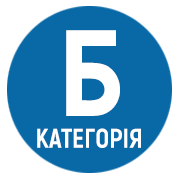FORENSIC PSYCHOLOGICAL AND ART SCIENTIFIC EXPERTISE: LEADING CATEGORIES IN DEFINING INFORMATION THAT IS CHILD PORNOGRAPHY
DOI:
https://doi.org/10.32782/2522-9656/2024-15-3Keywords:
forensic expertise, overtly sexual imagery, overtly sexual behavior, indecent imagery, typical sexual satisfaction, overtly sexual actions, child pornographyAbstract
This article discusses the problematic issues regarding the definition of key categories of information that qualify as child pornography: overtly sexual imagery and behavior, both from a purely linguistic perspective and through the lens of perception psychology. The aim is to enable the application of criteria for explicitness and sexuality in expert practice when identifying information that falls under the category of child pornography. A linguistic analysis of the concepts «overtly sexual imagery» and «overtly sexual behavior», «indecent imagery», «typical sexual satisfaction» and «overtly sexual actions» has been conducted. It is noted that «indecent imagery» and «overtly sexual» are not synonymous. «Indecent imagery» carries a negative connotation, representing content that consistently contradicts moral norms and accepted standards of behavior in society. Conversely, «overtly sexual» describes content that is open and undisguised, yet does not violate societal moral and behavioral norms and does not have a negative connotation. It is noted that a methodology for conducting a comprehensive psychological and art expert examination of child pornography is currently being developed at the Odessa Scientific Research Institute of Forensic Expertise (ONDISE). The subject of study for the expert psychologist during such comprehensive examinations is the perception of images of individuals and their behavior, assessing whether they exhibit signs of belonging to a child’s age group and the degree of their sexuality, as found in video recordings, photographs, drawings, and so on. Perception is regarded as the product of the process of internalizing images from the objective world. A conclusion has been drawn that the detailed analysis of word combinations found in the in Art. 156-1 of the Criminal Code of Ukraine and their incorporation into the term «child pornography» significantly enhances the possibilities for proving cases of the unacceptable use of children and reduces the threshold of tolerance in society, investigations, and the court to the appearance of children in inappropriate images and contexts.
References
Кримінальний кодекс України від 05.04.2001 № 2341-III. URL: https://zakon.rada.gov.ua/laws/show/2341-14#Text (дата звернення: 20.05.2024).
Kloess J. A., Woodhams J., Whittle H., Grant T., Hamilton-Giachritsis C. E. The challenges of identifying and classifying child sexual abuse material. Sexual Abuse, 31(2), 2017. 173–196. DOI: 10.1177/1079063217724768.
Child pornography laws in Australia. URL: https://en.wikipedia.org/wiki/Child_pornography_laws_in_Australia (дата звернення: 20.05.2024).
Child pornography laws in the Netherlands. URL: https://en.wikipedia.org/wiki/Child_pornography_laws_in_the_Netherlands (дата звернення: 20.05.2024).
Конвенція про кіберзлочинність від 23.11.2001. URL: https://zakon.rada.gov.ua/laws/show/994_575#Text (дата звернення: 20.05.2024).
Вставні зуби, накладні груди: що роблять з дітьми заради конкурсів краси. URL: https://www.forumdaily.com/uk/vstavnye-zuby-nakladnaya-grud-chto-delayut-s-detmi-radikonkursov-krasoty/ (дата звернення: 20.05.2024).
Словник української мови : в 11 т. Київ : Наука, 1970–1980. Т. 2. URL: http://sum.in.ua (дата звернення: 20.05.2024).
Великий тлумачний словник (ВТС) сучасної української мови. Київ : Перун, 2005. URL: http://slovopedia.org.ua (дата звернення: 20.05.2024).
Полюга Л. М. Словник синонімів української мови. Київ : Довіра, 2006. URL: http://slovopedia.org.ua (дата звернення: 20.05.2024).





